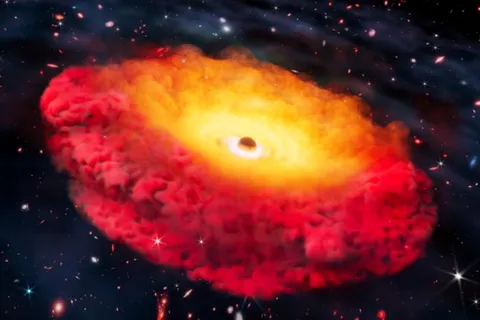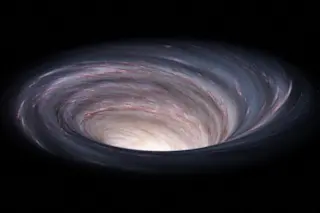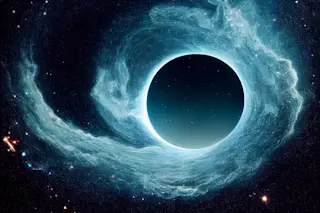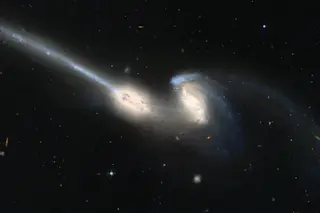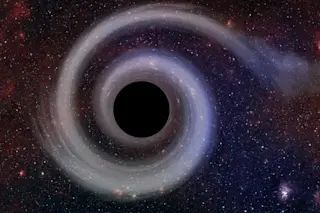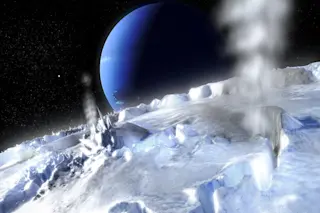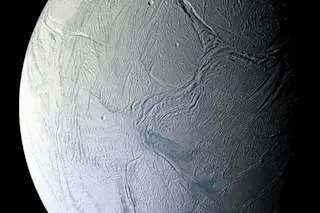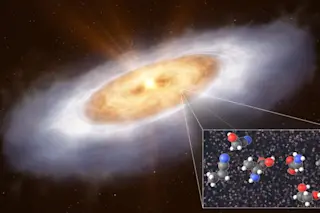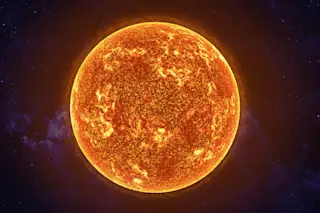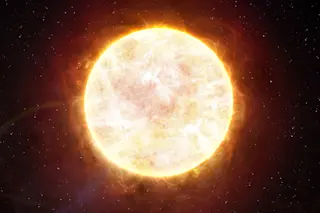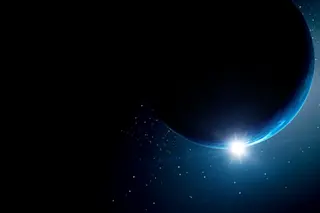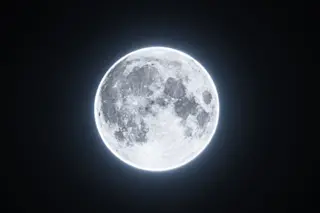In the far reaches of space, the Universe’s earliest black hole has come to light. The supermassive black hole and its home galaxy, CAPERS-LRD-z9, hail from 500 million years after the Big Bang, which means they originated 13.3 billion years in the past.
A study published in the Astrophysical Journal details this groundbreaking discovery, which could help scientists glean clues about the early Universe and the development of black holes. The newly identified black hole is no ordinary black hole, not least because of its unfathomably old age; its brightness, colossal size, and unmistakable red hue make it a prized discovery for researchers.
A Black Hole from the Cosmic Dawn
The black hole of CAPERS-LRD-z9 is like a primordial time capsule from the Cosmic Dawn, an era when the first stars and galaxies began to pop up throughout the Universe. It was detected by the James Webb Space Telescope’s CAPERS (CANDELS-Area Prism Epoch of Reionization Survey) program, which searches through the distant Universe to learn about its structure and growth.
To catch a glimpse of black holes and stars in the distant Universe, scientists observe the environments around them by splitting the light they emit into multiple wavelengths. This process, called spectroscopy, allows them to determine the characteristics of celestial objects.
To find black holes, scientists look for gas surrounding them. The light from the gas moving away from us is stretched into wavelengths that are redder, while the light from the gas moving toward us is compressed into wavelengths that are bluer.
In this way, the research team involved with the new study managed to distinguish the black hole’s spectroscopic signature from CAPERS-LRD-z9.
Read More: The Middle of the Milky Way Is Home to a Supermassive Black Hole – Here’s What we Know
Spotting Little Red Dots
Taking a closer look at CAPERS-LRD-z9, the researchers realized that it belongs to a class of galaxies known as “Little Red Dots,” first discovered by the JWST in 2024. These galaxies only show up in the first 1.5 billion years of the Universe, and their brightness and compactness have perplexed scientists ever since their initial identification.
“The discovery of Little Red Dots was a major surprise from early JWST data, as they looked nothing like galaxies seen with the Hubble Space Telescope,” said co-author Steven Finkelstein, director of the Cosmic Frontier Center based out of the University of Texas at Austin, in a statement. “Now, we're in the process of figuring out what they’re like and how they came to be.”
CAPERS-LRD-z9 and its black hole might have answers for scientists, who have suspected that supermassive black holes cause the brightness coming from the Little Red Dots. Brightness in a galaxy normally stems from a large number of stars, but Little Red Dots were formed when large masses of stars weren’t yet rife across the Universe.
Despite their depiction as dark, all-consuming voids, black holes actually produce a brilliant glare of light. However, it’s not the black hole itself that’s shining — they’re invisible, and cannot emit or reflect light; instead, it’s the gaseous material flowing around a black hole that generates light as it gets heated and compressed.
Researchers confirmed that this phenomenon was happening in CAPERS-LRD-z9 as a result of its black hole.
Rethinking Black Hole Evolution
CAPERS-LRD-z9 isn’t just astonishingly bright, but it also has a distinct red color, just like all other Little Red Dots. The researchers believe this redness is a result of the gas surrounding the black hole, which may skew passing light into red wavelengths.
The size of the galaxy’s black hole is also a striking characteristic, as it’s estimated to be 300 times larger than our sun. Unlike black holes formed later in the Universe’s history, ones born in the first few hundred million years wouldn’t have had access to as many resources to bulk up.
“This adds to growing evidence that early black holes grew much faster than we thought possible,” said Finkelstein. “Or they started out far more massive than our models predict.”
The researchers hope to collect additional data on the new galaxy and its black hole, which could lead to an enhanced understanding of black hole evolution in the Universe’s earliest days.
Read More: 2,500 New Active Black Holes Identified, Raising Questions About How They Evolve
Article Sources
Our writers at Discovermagazine.com use peer-reviewed studies and high-quality sources for our articles, and our editors review for scientific accuracy and editorial standards. Review the sources used below for this article:
- Astrophysical Journal. CAPERS-LRD-z9: A Gas-enshrouded Little Red Dot Hosting a Broad-line Active Galactic Nucleus at z = 9.288
- McDonald Observatory. Newfound Galaxy Class May Indicate Early Black Hole Growth
